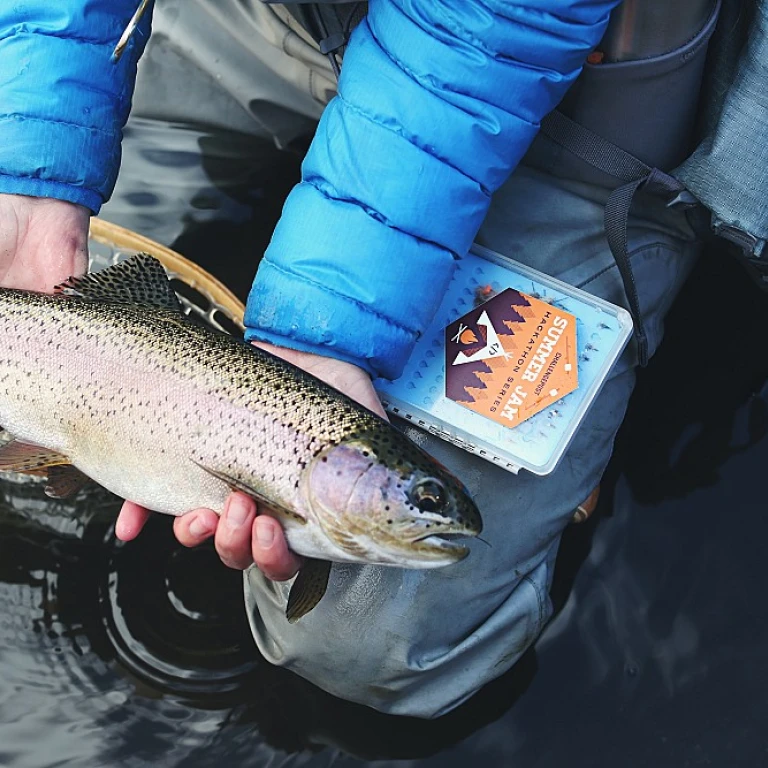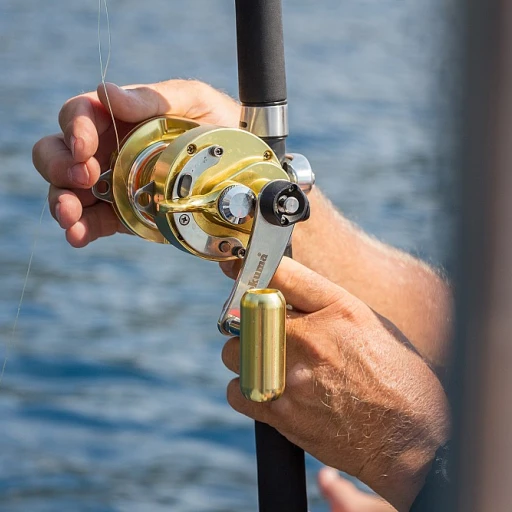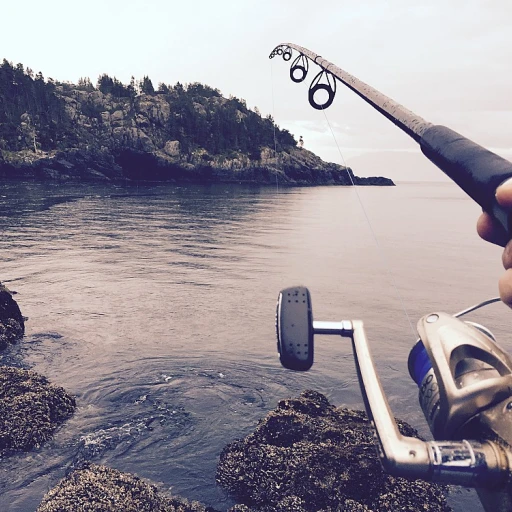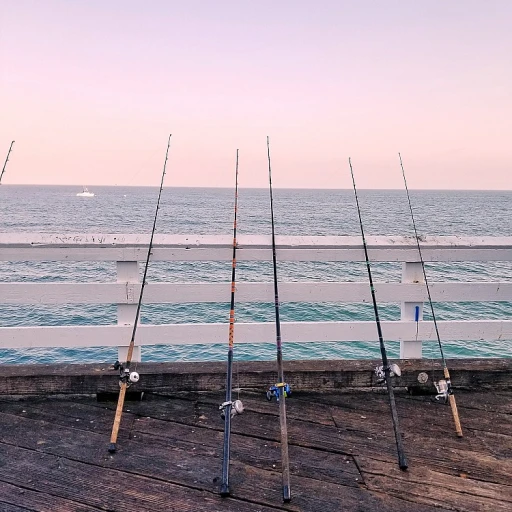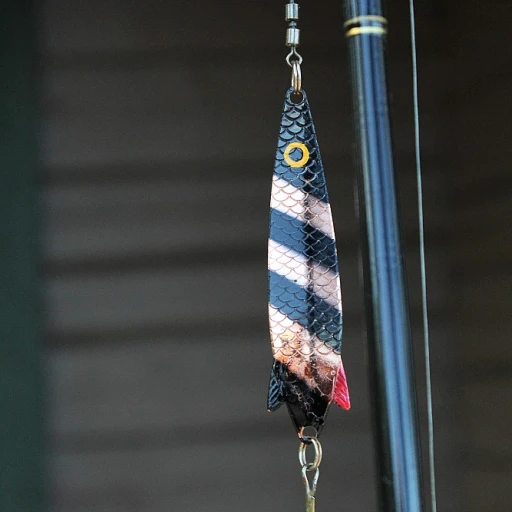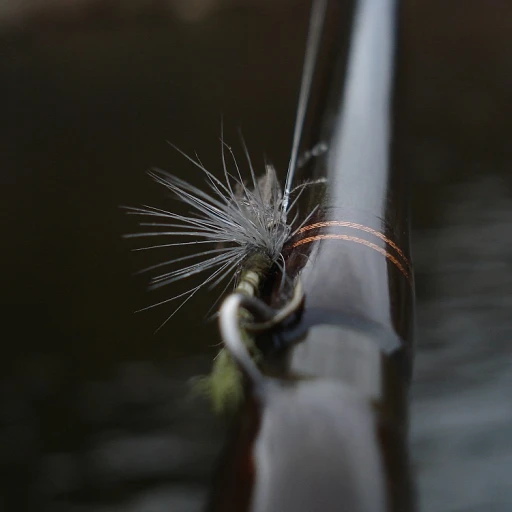
Understanding the basics of pickled fish
What is pickled fish?
Pickled fish is a time-honored delicacy enjoyed by food lovers worldwide, from South Africa to Michigan. But what exactly is it? Essentially, pickling fish is a method of preserving it using a brining solution of vinegar, salt, and spices. This method not only extends the shelf life of fish but also infuses it with tangy, savory flavors that are quite irresistible.
The science behind pickling fish
Pickling fish involves immersing the fish in a brine made from water, vinegar, and salt, with additional spices and ingredients to add flavor. The pickling process uses the acidity of vinegar, which typically ranges from 5-7% acetic acid, to create an environment where harmful bacteria cannot thrive. This process is known as the curing process, which refers to the way the fish's texture and flavor transform over time. McCormick Mixed Pickling Spice is a popular choice among many who appreciate a traditional flavor profile.
Why do people love pickled fish?
Whether it's the Cape Malay pickled fish from South Africa or the pickled Northern pike enjoyed in Kansas and the Midwest, the appeal is universal. This dish can be a part of festive meals or a simple snack. Many appreciate how pickling retains the texture and freshness of fish while adding layers of flavors. Sherry Ronning, a Midwestern cuisine expert, often mentions the balance of tangy, salty, and sometimes slightly sweet flavors that make pickled fish so appealing.
Health benefits and nutritional value
Pickled fish isn't just delicious; it's also nutritious. The pickling process retains most of the omega-3 fatty acids found in fish, which are essential for heart health. Additionally, pickled fish can be a low-calorie, high-protein option, making it an excellent addition to a balanced diet. The addition of various spices can also offer anti-inflammatory benefits.
Stay tuned as we explore choosing the right fish for pickling, preparing your fish, and creating the perfect pickling brine in the subsequent sections. Ultimately, mastering the art of pickling fish will open up a world of culinary delight and nutrition.
Choosing the right fish for pickling
Choosing the perfect fish for pickled recipes
Not all fish are created equal when it comes to pickling. Some fish hold up better to the curing process than others, resulting in a more flavorful and firm texture. Let’s dive into the best fish options for your pickled fish recipe and learn why they work so well.
Why choose northern pike?
Northern pike, often found in the cool waters of Michigan and Kansas, is a favorite among pickling enthusiasts. Known for its firm flesh and mild flavor, this fish absorbs the pickling solution beautifully. Northern pike is also less likely to fall apart during the brining process, making it a reliable choice.
According to Sherry Ronning, a Midwestern cuisine expert, “Pike's texture allows it to stand up well in the curing process, offering a perfect canvas for the flavors of vinegar, salt, and spices.”
Exploring other fish options
While pike is a popular choice, other fish like herring, mackerel, and even salmon have been used in traditional pickling recipes. Herring, in particular, is a staple in South African and Cape Malay pickled fish recipes. Its oily flesh pairs wonderfully with the tangy and spicy pickling solution typical of these regional dishes.
In South Africa, pickled fish is a dish deeply rooted in tradition. South African pickled fish, often made with yellowtail or snoek, is a seasonal favorite around Easter. The fish is cooked first, then covered in a fragrant pickling solution made with white vinegar, onions, bay leaves, and a specific blend of spices.
Freshness is key
The success of your pickled fish recipe hinges on the freshness of the fish. Always choose fresh, firm fish to ensure the best flavor and texture. If you're not using the fish immediately, make sure to keep it cold and properly stored until you begin the curing process.
McCormick mixed pickling spice, available on Amazon, can be an excellent addition to your pickling brine, lending a robust flavor profile that complements the fish.
Local vs. store-bought
Where you source your fish also matters. While store-bought fish is convenient, locally sourced fish from a trusted fishmonger or, if possible, caught yourself, adds an unmatched freshness to your dish. In places like Michigan, where fishing is a popular activity, many anglers prefer using their catch for pickling, adding a personal touch to their traditional recipes.
Whether you’re making a classic Midwestern pickled northern pike or exploring an exotic South African variation, the journey begins with selecting the right fish. Ready to start? Next, we'll prepare your fish for pickling, ensuring the best texture and flavor in the final dish.
Preparing your fish for pickling
Preparing your fish for pickling
Alright, you've chosen your fish – be it a pike, northern pike, or any other preferred catch – it's time to get it ready for pickling. The preparation phase is critical for achieving that perfect texture and flavor.
Cleaning your fish
Step one: rinse your fish thoroughly with cold water to remove any debris or scales. If you've opted for pike, ensure you remove the Y-bones, making filleting easier and more efficient. According to Sherry Ronning, an expert in Midwestern cuisine, this step is particularly crucial to avoid any lingering 'fishy' taste. Pro tip: Keep some white vinegar handy to neutralize fishy odors on your hands or surfaces.
Creating the curing solution
Creating a curing solution begins with mixing salt and water. The general rule of thumb is to use about 1/2 cup of salt for every 4 cups of water. Submerge your fish pieces in this solution and refrigerate for 48 hours. This process draws out moisture, firms up the fish's texture, and helps preserve it. McCormick mixed pickling spice is a fantastic addition to the curing solution to enhance the flavor.
Drying and slicing
After the curing period, rinse the fish under cold water to remove excess salt. Pat each fillet dry with paper towels; moisture is the enemy of good pickling here. Slice the fillets into bite-sized pieces. Your aim is uniformity in size for even pickling. This also makes them perfect for layering in your jars. Remember, a jar with a wide mouth works best for easy access.
Layering your preparation
Now, let's talk layering. Choose your favorite combo of aromatics: onions, bay leaves, and pickling spices. Layer your fish pieces alternately with these ingredients in the jar. A well-layered jar not only looks appealing but ensures the flavors can seep thoroughly through each layer.
Using white vinegar cups (amount based on your jar size) ensure that all your ingredients are adequately covered. According to a study on the historical methods of fish preservation, the right balance of vinegar and water can significantly enhance the pickled fish's shelf life. Mix your pickling brine (detailed in another part of our guide) and pour it over till everything is submerged.
The magic of pickling is in the details. Each step, from cleaning to curing, impacts the final taste, so no shortcuts here, folks. In South African pickled fish recipes, they often emphasize patience and precision in preparation – a sentiment echoed by anglers and chefs across the globe.
Ready for the brine? Let's get pickling and stay tuned for the step-by-step process.
Creating the perfect pickling brine
What goes into a great pickling brine
When crafting your pickling brine, you want the right balance of flavors to enhance the fish without overpowering it. Let's break down the essentials, starting with the foundation: vinegar and water.Choosing your vinegar: Traditional white vinegar is a go-to for its clean, sharp taste. A typical brine might use about 3 to 4 cups of white vinegar depending on the quantity of fish. Apple cider vinegar can add a slightly sweet, fruity note, but it’s generally used in smaller quantities to avoid overwhelming the pickling solution. The choice of vinegar really dictates the flavor profile of your pickled fish.
Adding salt: Salt is more than just a seasoning here. It’s a crucial element in the curing process. For every cup of vinegar, use approximately 1/4 cup of salt. This ratio ensures that the solution is adequately briny to not only flavor the fish but also preserve it.
The sugar element: Though not necessary, sugar adds a subtle sweetness that contrasts nicely with the acidity of vinegar. Recipes often call for about 1/2 cup of sugar per 4 cups of vinegar. Tweak this to find your preferred balance.
Water: To balance the acidity, water is added to the mix. Typically, in a recipe with 4 cups of vinegar, you’d add 1 cup of water. This softens the bite of the vinegar while still maintaining its preservative properties.
Spices for depth: Classic pickling spices include mustard seeds, coriander seeds, fennel seeds, and bay leaves. McCormick Mixed Pickling Spice, a readily available blend, works wonders here. For a 4-cup vinegar base, use about 2 tablespoons of pickling spice. Sherry Ronning, a renowned expert in Midwestern cuisine, recommends adding spices like dill, allspice, and peppercorns to add complexity to the brine.
Building layers of flavor: the soaking process
The fish won’t just sit in brine; you'll need to infuse it with onions and sometimes other vegetables, like carrots and bell peppers. Start by slicing onions thinly. Traditionally, about 2 onions are sufficient for around 4-5 pounds of pike or another white fish. South African pickled fish recipes often include these aromatic layers, giving the final product a well-rounded taste.Arrange a layer of fish in your pickling jar, then top it with onions and spices. Repeat this process until all your fish is used up, then pour the brine over everything, submerge the fish completely.Timing and patience: Once sealed, the jars need to be refrigerated. The curing process requires time - at least 5-7 days before the fish is ready to eat. This waiting period allows the flavors to meld beautifully. In Michigan, where cold water fish like northern pike are popular, brining times can stretch up to two weeks for an even more intense flavor infusion.Practical tip: Store your jars in the coldest part of the refrigerator. The low temperature helps maintain the fish’s texture and prevents spoilage. If you're using wide-mouth jars, make sure they’re sealed tight to avoid any contamination.The magic behind well-balanced flavor
In South Africa, pickling fish is an art - Cape Malay recipes often include curry powder and oil for a distinct spicy edge. On the other hand, a traditional Midwestern recipe might lean towards a simpler approach, relying on the pure taste of vinegar, salt, and brine spices.Regardless of the style you’re aiming for, the interplay of these ingredients ensures your pickled fish will be a flavorful addition to your culinary repertoire. Using this step-by-step brine creation process, you’re well on your way to mastering the art of pickled fish.The step-by-step pickling process
Step-by-step pickling process for irresistible fish flavors
Alright, now that we've got the basics down and picked our favorite fish, it's time to get that brine ready and dive into the nitty-gritty of making your pickled fish. Believe me, this part is where it all comes together.
Preparing the brine
First up, the brine—which is the magic sauce, really. Here’s a quick way to prepare a reliable pickling solution:
- Ingredients:
- 1 cup white vinegar
- 1 cup water (cold water works best)
- 2 tablespoons salt (regular table salt or sea salt)
- 1/2 cup sugar
- 2 tablespoons pickling spice (McCormick mixed pickling spice is pretty tried and true)
- 2 bay leaves
- Steps:
- Combine the white vinegar, water, sugar, and salt in a pot.
- Stir the mixture over medium heat until the sugar and salt dissolve completely.
- Once dissolved, add the pickling spice and bay leaves.
- Bring the mixture to a gentle boil, then let it cool down to room temperature.
Remember, the right balance of these ingredients makes a huge difference. Adjust to your liking but stick to the basics as a guideline.
Fish preparation
Next, prep your fish. If you're using a firm fish like northern pike, you’ll need to cut it into fillet-sized pieces. Here's what you do:
- Rinse your fish in cold water, pat it dry with paper towels.
- Cut into even pieces—small enough to fit comfortably in your pickling jars.
- Some folks swear by a quick salt cure before pickling. Layer fish pieces with salt in a bowl, and let them sit for 30 minutes. Rinse and pat dry again.
Why bother? The salt pull out additional moisture, making your fish firm up bit for better texture in the brine.
Layering and curing
Time to start layering your fish and onions in the jar.
- Place few slices of onions at the bottom of a wide-mouth jar (get'em on Amazon or at your local store).
- Next, layer fish pieces on top of the onions.
- Keep alternating layers of fish and onions until the jar is almost full, leaving a small gap at the top.
Once your layering is done, pour the brine solution over the fish and onions. Shake and tap the jar gently to release any trapped air bubbles—those can mess with the curing process.
Refrigerate and wait
Alright, now comes the hardest part: waiting. Cover the jar and refrigerate it for about three days, which will let the flavors meld beautifully. Some folks even prefer letting it sit for a week for maximum zesty goodness.
According to Sherry Ronning, a Midwestern cuisine enthusiast, the longer you let it sit, the more pronounced the flavors become. She mentions, “After three days, you start to taste the sea inside the fish blended with the tang of the brine.”
Feeling adventurous? Add a twist of oil (olive or regular cooking oil) to the mix for that extra richness. And hey, if you're a sauce person, try adding a spoon of your favorite hot sauce to the brine before curing.
And there you have it! A step-by-step journey to make your very own fishy creation. The whole affair is more art than science, don't hesitate to tinker until it fits your taste buds perfectly.
Related popular reads on Reddit include hundreds of replies and views discussing variants - from South African Cape Malay pickled fish to Midwest USA ways of doing it.
In the next part of our guide, we dig into popular recipes from around the globe—so stay tuned!
Popular pickled fish recipes from around the world
Delving into different regional recipes
The world of pickled fish is vast and diverse, and it's fascinating to see how different cultures approach this tasty preservation method. Let's take a journey through some popular pickled fish recipes from around the globe.
Nordic pickled herring
The Nordic countries, particularly Sweden, have a long tradition of pickling fish, particularly herring. To get started, you will need herring fillets, white vinegar, sugar, water, salt, and a blend of pickling spices such as mustard seeds, peppercorns, and bay leaves. First, soak the herring fillets in a cold water bath for about 24 hours, changing the water a few times. This step helps to leach out any excess salt. Once ready, cut the fillets into bite-sized pieces. Prepare your pickling solution by combining equal parts white vinegar and water, adding a cup of sugar for every cup of liquid, and tossing in your spices. Bring the solution to a gentle simmer for a few minutes, then let it cool. Layer the fish pieces in a glass jar with thin slices of onions, then pour the cooled pickling brine over the top until the fish is fully submerged. Seal the jar and refrigerate it for at least three days before eating.
Cape malay pickled fish
A dish hailing from the Cape Malay community in South Africa, this recipe combines sweet, spicy, and tangy flavors. You'll need firm white fish such as pike, sliced onions, garlic, ginger, red chilies, bay leaves, curry powder, turmeric, coriander seeds, vinegar, and sugar.Start by frying your fish fillets until golden brown and set them aside. In a large pot, sauté the onions, garlic, and ginger until the onions are soft and translucent. Add the spices and chilies, cooking them for a couple of minutes until fragrant. Pour in the vinegar and sugar, stirring until the sugar dissolves, then allow the mixture to simmer for around 10 minutes. Layer the fried fish into a large dish and pour the hot pickling solution with onions and spices over the fish. Let it cool down, then cover and refrigerate for 2-3 days before serving. The Cape Malay pickled fish often graces Easter tables in South Africa.
Japanese nanbanzuke
In Japan, a popular pickled fish dish is nanbanzuke, which involves marinating fried fish in a mixture of vinegar, dashi, soy sauce, and sugar. You will need small fish like mackerel, carrots, onions, bell peppers, soy sauce, mirin, dashi (Japanese soup stock), rice vinegar, and sugar.After frying your fish until crispy, set it aside. In a separate pot, combine rice vinegar, soy sauce, dashi, and sugar, bringing the mixture to a slight boil. Add julienned vegetables such as carrots, onions, and bell peppers into the pot and simmer for a few minutes until they are slightly tender. Place the fried fish in a deep dish and pour the hot marinade over it. Let it cool, then refrigerate for 24 hours. Nanbanzuke is often served as a refreshing appetizer or side dish.
Fishing for more inspiration
From northern Europe to Africa and Asia, the art of pickling fish is rich with variations and flavors. Each recipe brings its own unique touch, reflecting local tastes and ingredients. Whether you're a fan of traditional Nordic herring, South African Cape Malay, or Japanese nanbanzuke, there's a pickled fish recipe out there that will captivate your taste buds. Don't forget to check out the earlier parts of this guide—it covers everything from understanding the basics to serving and enjoying your pickled fish masterpiece.
Expert tips and common mistakes to avoid
Find fresh fish, not regret
When it comes to pickling fish, starting with the freshest possible fish is key. You might think, 'I'll just grab whatever I find at the local market,' but trust me, fresher is always better. Fresh fish ensures a more flavorful and safe pickling process. If you’re unsure about the freshness, ask the fishmonger when and where the fish was caught.
Use the right vinegar for best results
White vinegar is often the go-to for a pickling solution. It’s simple and effective. A typical pickling solution includes white vinegar, water, salt, and sugar. For instance, combining 2 cups of vinegar with 1 cup of water and 1/4 cup of salt forms a solid base. However, feel free to experiment with apple cider vinegar or rice vinegar for a different twist.
Keep your spices varied, but balanced
Pickling spice is critical for the aromatic flavor. You can find pre-mixed options like McCormick’s Mixed Pickling Spice on Amazon, or you could make your own blend. Common ingredients include mustard seeds, bay leaves, and coriander. But remember, don't overwhelm your fish; stick to a balanced mix to keep the flavors harmonious.
Timing is everything
The curing process can vary depending on the type of fish. Generally, the fish will need to sit in the pickling solution for at least 3 days to ensure it is safely cured and the flavors fully developed. For example, northern pike, a popular choice for pickling, benefits from this longer time.
Store safely to enjoy later
After you've pickled your fish, storing it properly is crucial. Make sure to use a wide-mouth jar with a tight seal. Place the jar in the refrigerator and allow the flavors to develop. Your pickled fish should be ready to eat after sitting for a few days. Remember to label the jar with the date you prepared it to keep track.
Hear from the experts
According to Sherry Ronning, a Midwestern cuisine expert, pickled fish can be a delightful addition to your homemade menu when prepared correctly. She suggests always using cold water to rinse the fish before brining and layering the fish with onions in the jar to enhance the flavor.
Learn from common goof-ups
One common mistake is adding too much salt. Only a quarter cup of salt per two cups of vinegar and one cup of water is typically sufficient. Another pitfall is skipping the rinsing step, which can result in overly salty fish. Lastly, be wary of not keeping the fish submerged in the brine; this can lead to uneven pickling.
Serving and enjoying your pickled fish
Pairing pickled fish with meals
If you've followed the previous steps, you're now ready to dig in and enjoy the fruits of your labor. But the question remains: what's the best way to serve and savor your homemade pickled fish? Here are some tried-and-true serving suggestions that you can easily integrate into your meals.
In South African cuisine, and particularly within Cape Malay traditions, pickled fish is often served cold as part of a festive spread, especially around Easter. It pairs excellently with fresh bread, crusty baguettes, or white rice. Consider adding a side of sliced onions, which add a subtle sweetness and crunch, enhancing the overall flavor profile.
The pickled fish sandwich
A classic favorite would be the pickled fish sandwich. Layer your pickled fish with crisp lettuce, thinly sliced red onions, and a dollop of tangy sauce or mayonnaise on a fresh ciabatta roll. This simple yet flavorful combination showcases the distinct taste of the fish while providing a balanced, satisfying meal.
Incorporating pickled fish into salads
If you're inclined towards a lighter option, toss your pickled fish into a mixed green salad. Use a bed of arugula or spinach, add cherry tomatoes, olives, and sprinkle some feta for a Mediterranean twist. Drizzle with olive oil and a splash of the pickling brine for added zest.
Tapas and appetizers
Pickled fish also shines as an appetizer. Serve it with crackers, as part of an assorted cheese platter, or alongside other pickled goodies like gherkins and capers. This can be a delightful addition to your next social gathering or a simple snacky dinner at home. The briny, tangy notes of pickled fish can stand alone and get all the praise they deserve.
Expert insights: Sherry Ronning
According to Sherry Ronning, a notable chef who specializes in Midwestern cuisine, “Pickled fish is not just for the holidays. It's a versatile ingredient that can elevate everyday meals with its unique flavor and texture.” She suggests experimenting with different herbs and spices in your pickling solution to add new dimensions to your dishes. For instance, using Mccormick mixed pickling spice is a convenient way to infuse robust flavors into your brine.
Storing your pickled fish properly
Your pickled fish will last longer if stored correctly. Ensure that the fish is fully submerged in the pickling solution and stored in a wide-mouth, airtight container. Keep it refrigerated, and it should stay fresh for up to a month, allowing the flavors to develop and mature over time.
Reddit users' pro tips
Reddit forums, like r/Cooking, are abuzz with home chefs sharing tips and tweaks. One user swears by adding bay leaves and mustard seeds to their brine, while another highlights the use of white vinegar and sugar for a milder, more palatable flavor.
Your homemade pickled fish is no longer just a dish—it’s an experience to be shared and savored. Enjoy it with family and friends, and don't be afraid to put your unique spin on these serving suggestions. The sky's the limit!

